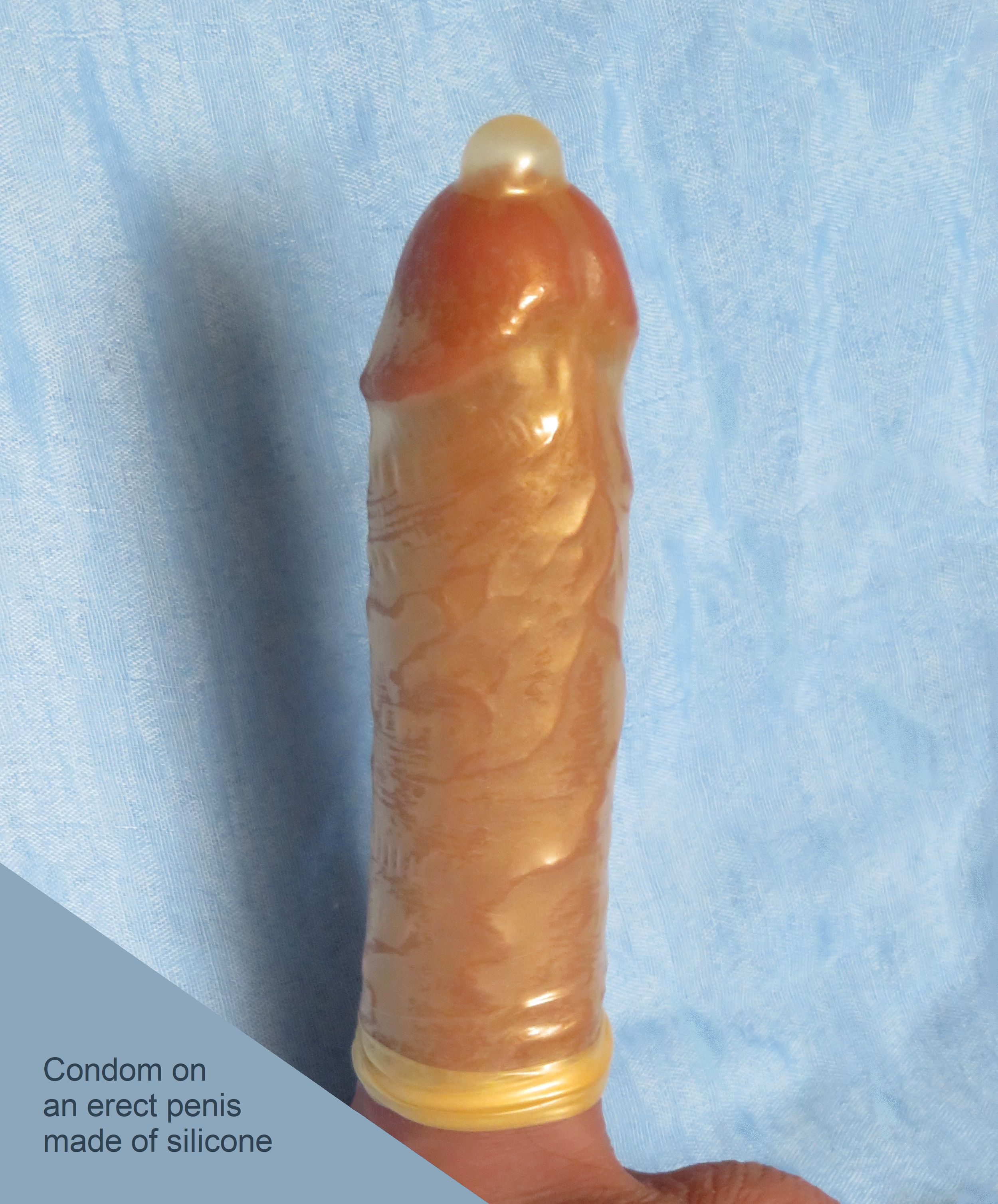|
History Of Condoms
The history of condoms goes back at least several centuries, and perhaps beyond. For most of their history, condoms have been used both as a method of birth control, and as a protective measure against sexually transmitted infections such as syphilis, gonorrhea, chlamydia, hepatitis B and more recently HIV/AIDS. Condoms have been made from a variety of materials; prior to the 19th century, chemically treated linen and animal tissue (intestine or bladder) are the best documented varieties. Rubber condoms gained popularity in the mid-19th century, and in the early 20th century major advances were made in manufacturing techniques. Prior to the introduction of the combined oral contraceptive pill, condoms were the most popular birth control method in the Western world. In the second half of the 20th century, the low cost of condoms contributed to their importance in family planning programs throughout the developing world. Condoms have also become increasingly important in efforts ... [...More Info...] [...Related Items...] OR: [Wikipedia] [Google] [Baidu] |
Condom
A condom is a sheath-shaped Barrier contraception, barrier device used during sexual intercourse to reduce the probability of pregnancy or a Sexually transmitted disease, sexually transmitted infection (STI). There are both external condoms, also called male condoms, and Internal condom, internal (female) condoms. The external condom is rolled onto an erect penis before intercourse and works by forming a physical barrier which limits skin-to-skin contact, exposure to Bodily Fluids, fluids, and blocks semen from entering the body of a sexual partner. External condoms are typically made from latex and, less commonly, from polyurethane, polyisoprene, or lamb intestine. External condoms have the advantages of ease of use, ease of access, and few side effects. Individuals with latex allergy should use condoms made from a material other than latex, such as polyurethane. Internal condoms are typically made from polyurethane and may be used multiple times. With proper use—and ... [...More Info...] [...Related Items...] OR: [Wikipedia] [Google] [Baidu] |
Loincloth
A loincloth is a one-piece garment, either wrapped around itself or kept in place by a belt. It covers the genitals and sometimes the buttocks. Loincloths which are held up by belts or strings are specifically known as breechcloth or breechclout.U.S. National Park Service Retrieved on 2009-12-22. . Retrieved on 2009-12-22. Often, the flaps hang down in front and back. History and types [...More Info...] [...Related Items...] OR: [Wikipedia] [Google] [Baidu] |
Charles I Of England
Charles I (19 November 1600 – 30 January 1649) was King of Kingdom of England, England, Kingdom of Scotland, Scotland, and Kingdom of Ireland, Ireland from 27 March 1625 until Execution of Charles I, his execution in 1649. Charles was born into the House of Stuart as the second son of King James VI of Scotland, but after his father inherited the English throne in 1603, he moved to England, where he spent much of the rest of his life. He became heir apparent to the kingdoms of England, Scotland, and Ireland in 1612 upon the death of his elder brother, Henry Frederick, Prince of Wales. An unsuccessful and unpopular attempt to marry him to Infanta Maria Anna of Spain culminated in an eight-month visit to Habsburg Spain, Spain in 1623 that demonstrated the futility of the marriage negotiation. Two years later, shortly after his accession, he married Henrietta Maria of France. After his accession in 1625, Charles quarrelled with the English Parliament, which sought to curb his ro ... [...More Info...] [...Related Items...] OR: [Wikipedia] [Google] [Baidu] |
Renaissance
The Renaissance ( , ) is a Periodization, period of history and a European cultural movement covering the 15th and 16th centuries. It marked the transition from the Middle Ages to modernity and was characterized by an effort to revive and surpass the ideas and achievements of classical antiquity. Associated with great social change in most fields and disciplines, including Renaissance art, art, Renaissance architecture, architecture, politics, Renaissance literature, literature, Renaissance exploration, exploration and Science in the Renaissance, science, the Renaissance was first centered in the Republic of Florence, then spread to the Italian Renaissance, rest of Italy and later throughout Europe. The term ''rinascita'' ("rebirth") first appeared in ''Lives of the Artists'' () by Giorgio Vasari, while the corresponding French word was adopted into English as the term for this period during the 1830s. The Renaissance's intellectual basis was founded in its version of Renaiss ... [...More Info...] [...Related Items...] OR: [Wikipedia] [Google] [Baidu] |
Leonardus Lessius
Lenaert Leys, better known as Leonardus Lessius (1 October 1554 in Brecht - 15 January 1623, in Leuven) was a Brabant jurist, theologian, economist from the Jesuit order. Nicknamed the "oracle of the Low Countries", figurehead of the School of Salamanca, he was a great source of inspiration for later jurists like Grotius, Juan de Lugo or . Life Born to a farmer father, Lessius grew up in a family of four children of which he was the only boy. After primary studies in his village, his uncle encouraged him to continue his studies in the of Leuven. Receiving a scholarship, he studied after in the , an arts department, where he was merited in 1572 the title of ''primus'' among all philosophy students. The same year, instead of pursuing his studies in Law of Theologye at the university of Leuven, het decided to take orders in the Company of Jesus. After his novitiate in the Jesuit college of Saint-Omer in 1574, he taught philosophy in the college d'Anchin of Douai, where Ro ... [...More Info...] [...Related Items...] OR: [Wikipedia] [Google] [Baidu] |
Gabriele Falloppio
Gabriele Falloppio (1522/23 – 9 October 1562) was an Italian priest and anatomist often known by his Latin name Fallopius. He was one of the most important human anatomy, anatomists and physicians of the sixteenth century, giving his name to the fallopian tube. Life Falloppio grew up in Modena. His father died early but thanks to the support of affluent relatives he enjoyed a thorough humanist education in Modena, learning Latin and Greek and moving in the local circle of humanist scholars. He was for some years in the service of the Church, among others as a kind of warden at Modena's cathedral, but soon turned to medicine. In 1544, he performed a public anatomy in Modena. In 1545, at the latest, he began to study medicine at the University of Ferrara, at that time one of the best medical schools in Europe. It was there also that he much later, in 1552, when he was already professor in Padua, received his medical doctorate under the guidance of Antonio Musa Brasavola. He taug ... [...More Info...] [...Related Items...] OR: [Wikipedia] [Google] [Baidu] |
Pustule
A skin condition, also known as cutaneous condition, is any medical condition that affects the integumentary system—the organ system that encloses the body and includes skin, nails, and related muscle and glands. The major function of this system is as a barrier against the external environment. Conditions of the human integumentary system constitute a broad spectrum of diseases, also known as dermatoses, as well as many nonpathologic states (like, in certain circumstances, melanonychia and racquet nails). While only a small number of skin diseases account for most visits to the physician, thousands of skin conditions have been described. Classification of these conditions often presents many nosological challenges, since underlying causes and pathogenetics are often not known. Therefore, most current textbooks present a classification based on location (for example, conditions of the mucous membrane), morphology ( chronic blistering conditions), cause ( skin conditions ... [...More Info...] [...Related Items...] OR: [Wikipedia] [Google] [Baidu] |
Jared Diamond
Jared Mason Diamond (born September 10, 1937) is an American scientist, historian, and author. In 1985 he received a MacArthur Genius Grant, and he has written hundreds of scientific and popular articles and books. His best known is '' Guns, Germs, and Steel'' (1997), which received multiple awards including the 1998 Pulitzer Prize for general nonfiction. In 2005, Diamond was ranked ninth on a poll by '' Prospect'' and ''Foreign Policy'' of the world's top 100 public intellectuals. Originally trained in biochemistry and physiology, Diamond has published in many fields, including anthropology, ecology, geography, and evolutionary biology. In 1999, he received the National Medal of Science, an honor bestowed by the President of the United States and the National Science Foundation. He was a professor of geography at UCLA until his retirement in 2024. Early life and education Diamond was born on September 10, 1937 in Boston, Massachusetts. His parents were both Eastern Europ ... [...More Info...] [...Related Items...] OR: [Wikipedia] [Google] [Baidu] |
Henry VIII
Henry VIII (28 June 149128 January 1547) was King of England from 22 April 1509 until his death in 1547. Henry is known for his Wives of Henry VIII, six marriages and his efforts to have his first marriage (to Catherine of Aragon) annulled. His disagreement with Pope Clement VII about such an annulment led Henry to initiate the English Reformation, separating the Church of England from papal authority. He appointed himself Supreme Head of the Church of England and dissolution of the monasteries, dissolved convents and monasteries, for which he was List of people excommunicated by the Catholic Church, excommunicated by the pope. Born in Greenwich, Henry brought radical changes to the Constitution of England, expanding royal power and ushering in the theory of the divine right of kings in opposition to papal supremacy. He frequently used charges of treason and heresy to quell dissent, and those accused were often executed without a formal trial using bills of attainder. He achi ... [...More Info...] [...Related Items...] OR: [Wikipedia] [Google] [Baidu] |
Condom
A condom is a sheath-shaped Barrier contraception, barrier device used during sexual intercourse to reduce the probability of pregnancy or a Sexually transmitted disease, sexually transmitted infection (STI). There are both external condoms, also called male condoms, and Internal condom, internal (female) condoms. The external condom is rolled onto an erect penis before intercourse and works by forming a physical barrier which limits skin-to-skin contact, exposure to Bodily Fluids, fluids, and blocks semen from entering the body of a sexual partner. External condoms are typically made from latex and, less commonly, from polyurethane, polyisoprene, or lamb intestine. External condoms have the advantages of ease of use, ease of access, and few side effects. Individuals with latex allergy should use condoms made from a material other than latex, such as polyurethane. Internal condoms are typically made from polyurethane and may be used multiple times. With proper use—and ... [...More Info...] [...Related Items...] OR: [Wikipedia] [Google] [Baidu] |
Decline Of The Western Roman Empire
The fall of the Western Roman Empire, also called the fall of the Roman Empire or the fall of Rome, was the loss of central political control in the Western Roman Empire, a process in which the Empire failed to enforce its rule, and its vast territory was divided among several successor polities. The Roman Empire lost the strengths that had allowed it to exercise effective control over its Western provinces; modern historians posit factors including the effectiveness and numbers of the army, the health and numbers of the Roman population, the strength of the economy, the competence of the emperors, the internal struggles for power, the religious changes of the period, and the efficiency of the civil administration. Increasing pressure from invading peoples outside Roman culture also contributed greatly to the collapse. Climatic changes and both endemic and epidemic disease drove many of these immediate factors. The reasons for the collapse are major subjects of the historiogr ... [...More Info...] [...Related Items...] OR: [Wikipedia] [Google] [Baidu] |







